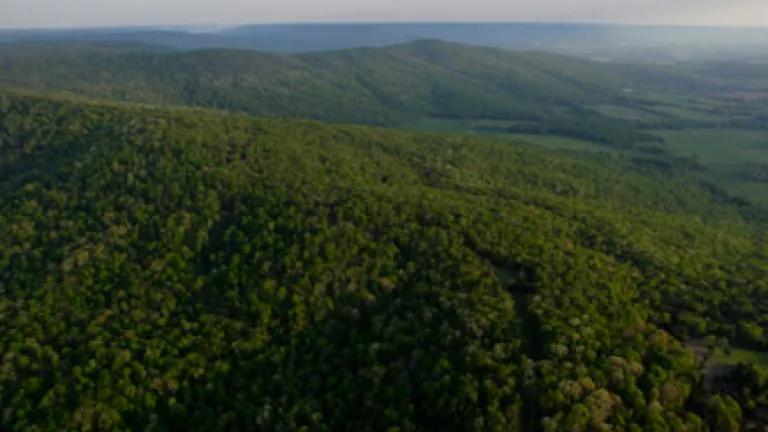
Earlier this month, state legislators in Georgia introduced a bill (HB 276) that would outlaw the use of coal mined by mountaintop removal for power generation. This followed similar legislation introduced last year in North Carolina. Although this controversial strip mining isn't practiced in either state, Georgia and North Carolina rank #1 and #2 respectively in the amount of MTR-mined coal their power plants burn. As it is, most of the coal purchased in these two states comes from Appalachia -- the region being wrecked by mountaintop removal.
Now my home-state of Maryland is taking a stand. This Wednesday there will be a hearing on a bill (HB 743), sponsored by State House Delegate Tom Hucker, which would ban utilities that operate coal-fired generating stations from purchasing or using coal extracted by mountaintop removal.
Rocky Topless?
Next week, the Tennessee State Legislature will take up legislation that goes even further than the bills in those other states. The State Senate will hold a hearing on the Scenic Vistas Protection Act (SB 1406), a bill that seeks to prevent mountaintop removal from expanding beyond the borders of Appalachia into the Cumberland region -- home to wildlife and other natural resources found nowhere else in the world.
Historically, these mountains have also been home to small-scale coal mining operations, but reserves in the area are so small and profit margins so thin that most mining operations ceased years ago. But rising coal prices have fueled renewed interest in coal mining in the Cumberlands.
The bi-partisan Scenic Vistas bill would prohibit state regulators from issuing permits that allow surface coal operations -- or its resulting waste -- within 100 feet of any streams. The legislation also would prohibit permits for strip mining that could alter or disturb any ridge line 2,000 feet above sea level. Although this bill would not eliminate coal mining in Tennessee, it would protect the Cumberlands from reckless ridge-destroying coal mining.
Ironically, one of the places in Tennessee being targeted by National Coal Corporation is the 74,000-acre Sundquist Wildlife Management Area in the northern Cumberland Plateau. (Check out this lovely slide show of the area.) Just a few years ago, the state invested more than $100 million to acquire and protect this land buy buying the surface and timber rights; however, because the company still owns the mineral rights it's possible that coal mining could still occur there.
All the more reason for Tennessee legislators to act sensibly by protecting the state's scenic vistas from the scourge of mountaintop removal.
Photo Credit: Cedar Ridge near Sewanee, Tenn., © Stephen Alvarez, National Geographic
